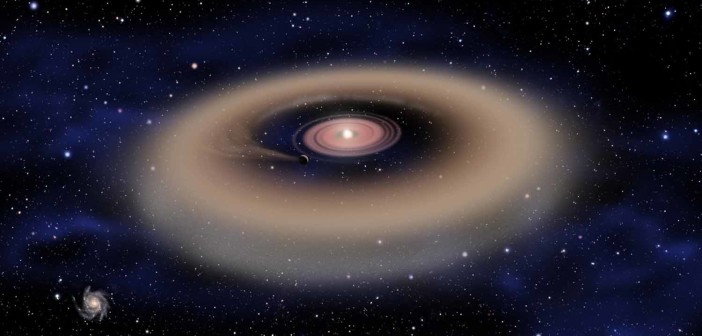A team of scientists led by Catherine Walsh (Leiden Observatory) has found evidence of two planets orbiting a young, hot star located relatively nearby, at just 335 light years from Earth. The star, HD 100546, is surrounded by a disk of gas and dust — which is a prime environment for forming planets. Previous observations have hinted at two planets potentially hiding in this disk, but directly imaging planets in disks is very difficult. Walsh’s team took a different approach to finding these subtle planets: rather than looking for them directly, the group instead looked for gaps in the dust of the disk.
The team examined the signature of dust particles in the disk around HD 100546 using observations from the Atacama Large Millimeter/Submillimeter Array (ALMA), a telescope located in Chile. They found that rather than forming a solid disk, the dust particles have settled into two nested rings with a gap between them. That gap is telltale evidence of a planet: planets embedded in disks tend to clear out a path as they orbit, accreting the gas and dust onto themselves.
Walsh’s team followed up the discovery by using different models of planetary formation to try to reproduce ALMA’s observations. They found that the best model required there to be two planets in HD 100546’s system: one located very close to the star, and a second, newly-forming planet located within the disk gap.
This model is consistent with previous estimates of where the two suspected planets might be located, which is promising news for exoplanet enthusiasts. HD 100546 could be our first opportunity to study a planet caught in the act of forming — which is an important step toward understanding how planets are created out of disks around young stars.
Citation:
Catherine Walsh et al. 2014 ApJ 791 L6 doi:10.1088/2041-8205/791/1/L6
